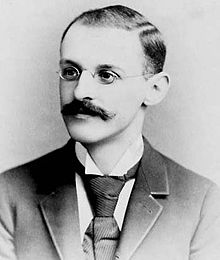A few weeks ago, I was unhinging my jaw to swallow the proverbial firehose of information that is musculoskeletal medicine. At some stage between prying my mouth open and forcibly dislocating my temporomandibular joint (really the highest-yield medical procedure for medical students in the information age … I highly recommend it if you want to have at least a fighting chance at Step 1), the following scenario blossomed into my mind:
A medical student from 1910 time travels to the present day to document out how medical training has changed, and he quickly takes note of a few other things.
Law enforcement, fraternities and the American social fabric are racist;
The state of Indiana is a joke;
Professional basketball players travel;
Hillary Clinton is trying to be President, and
Medical school is hard as shit!
…and he’d promptly turn back to fiddle with some knobs on his time machine, muttering under his breath, “Goddammit, I can never get this stupid machine to work.”
For the purposes of this article, the salient — but by no means the most disturbing — message of this ADD-fueled distraction is that medical education has not really changed since the seminal Flexner Report of 1910. To provide some historical context, Abraham Flexner was charged with “cleaning up” medical education and making sure that every medical school started to look like Johns Hopkins in 1910. (He labeled Hopkins as the model of education, but the Chicago medical schools, not so much: “a disgrace to the State whose laws permit its existence … indescribably foul … the plague spot of the nation.”) Flexner himself was an education expert, so he knew what he was doing. But, then again, doctors also “knew what they were doing” in Flexner’s era, a time when even the foremost leaders of medicine (like Hopkins founder William Osler) still believed bloodletting was a good idea. While the medical field has spent a lot of the last century figuring out better ways to cure people than poking bloody holes in them, medical education itself is still a relic of the good ol’ bloodletting days. (And I think I speak for many medical students that the act of memorizing the names, attachments, innervations and functions of every muscle in the body can sometimes feel like bloodletting.)
“Game Recognize Game”: (L) Flexner c. 1895 (R) Me circa a mid-MS1 identity crisis. Nice mustache, Mr. Flexner.
Don’t get me wrong; Flexner did a pretty good job back then, because the medical school “defect du jour” in 1910 wasn’t the volume of information, but rather the quality of information. The word “quack” held more meaning as a pejorative noun than as an onomatopoeic verb then, and the state of some schools was indeed “indescribably foul.” Of the Brooklyn Postgraduate Medical School, for example, Flexner wrote:
The existence of the school is a reproach to the state. It now operates on a limited charter from the state department of education, and is enabled to continue because it is aided by the city. It deserved no charter in the first place, and it deserves no recognition from the city now.
Don’t hold anything back, Abe! Tell us how you really feel, you medical muckraker you!
As a matter of fact, many of the schools mentioned in the course of this recital are probably without redeeming features of any kind. Their general squalor consorts well with their clinical poverty: the class-rooms are bare, save for chairs, a desk, and an occasional blackboard; the windows streaked with dust and soot. In wretched amphitheaters students wait in vain for “professors,” tardy or absent, amusing the interval with ribald jest and song. The teaching is an uninstructive rehearsal of text- book or quiz-compend: one encounters surgery taught without patient, instrument, model, or drawing; recitations in obstetrics without a manikin in sight, often without one in the building.
So Flexner did a good job of getting rid of the schools that couldn’t teach its students the difference between an Erlenmeyer flask stopper and a butt plug. A good thing, all in all! But like many of his luminaries at the dawn of the 20th century, Flexner was bigoted and ignorant according to modern standards. For example, he de-accredited all but two historically black medical schools because he believed that blacks were inferior as a race. In plainer English, he was a bona fide racist. Additionally — and I’ll be a bit more lenient on Flexner here — he didn’t put too much stock in anything besides science (such as social determination) as a foundation for medical teaching. Fair enough. Later studies like the one conducted at the Whitehall civil service in Britain forced even the most dogmatic empiricists to accept that society exerts powerful influences on patient health. So I’ll give Flexner a pass on this one. Nobody’s a perfect prognosticator, not even our Founding Fathers, which is exactly the same reason why a complete asshole like me could buy a firearm for “self-defense.”
“Staring down the barrel of democracy:” Dick Cheney, de facto 43rd President of the United States of America. Note to the other two dudes, courtesy of poor Harry Whittington: duck!
Thankfully, just as we have begun to question the generalizability of 2nd Amendment rights, we have also begun to question the in-Flexner-able dogma of medical education. In a recent NPR story headlined “Would Doctors Be Better If They Didn’t Have To Memorize,” doctor-writer Dr. John Henning Schumann points out that the Flexner model is completely overwhelmed by the sheer body of medical knowledge, which “by some estimates … doubles every three or four years.” Which is a poetically, viciously cyclic rate, because after four exhausting years of cramming all of this knowledge into my cranium to get an MD, I’ll have exactly that same amount of time remaining to catch up on all of the developments I missed. And when that’s done, another four years. And so on and so forth. You get the picture. Medical knowledge increases exponentially, while mine looks more like a sinus rhythmic EKG:
“Exam Cram:” It got me to medical school, and it will get me through it.
Clearly, the growth of the body of medical knowledge outpaces my ability to memorize, much less retain, the information thrust upon me. Yet here we are, stuck in a peculiar era when newly minted doctors are apparently better at parsing out the steps of the Krebs cycle than ensuring that their patients don’t die from hunger. Hell, call me a rebel, even a quack. But you can be damn sure that I know enough about the human body to understand that without two critical prerequisites — food to eat (glucose!) and air to breathe (oxygen!) — the Krebs cycle doesn’t even happen, and the cellular fiber of our being is reduced to the unrefined, filthy metabolic processes of the most wretched bacterium condemned to colonize the deep, dark recesses of our godforsaken planet.
So yeah, pretty surprising indeed that it took Dr. Schumann over ten solid years of practice to finally start asking his patients about hunger. While I for one appreciate Dr. Schumann’s honesty, I have a hard time reading this oversight as anything more than ineptitude. Things like nutrition, sources of income, home environment, social supports, education, sex, mood … these are all salient elements of the patient interview and have just as much to do with patient health as the Krebs cycle. At least Dr. Schumann, like many of his peers, admits that the medical curriculum does not really line up with reality in some places, and truthfully hasn’t done so for quite some time. Indeed, senior doctors might laugh among themselves about never having to clinically apply the Krebs’ cycle, but this is only because they are trained in an anachronistic education system that can at times be described as laughable.
Now, some may counter that medical students need to “pay their dues” before entering the hallowed medical profession. I get that. It’s imperative that medical students build a standardized body of knowledge before they are stamped with the MD and entrusted with the lives of people who don’t necessarily have that body of knowledge. That’s exactly what it means to be a “professional.” However, educational traditions should be upheld insofar as they are supported by the freshest pieces of medical evidence out there. The requirements stated by Flexner Report (debatably) met this standard in 1910 but fall woefully short in today’s day in age, when certain facts are commonly accepted: where a man breathes, what he eats, how he makes a living, the people he associates with, the cultural norms of his community, how much education he has received — all of these factors (and more) are crucially important to a patient’s history and health assessment.
Obviously, some traditions need to be upheld. Biological science is, and will continue to be, foundational to the rigorous training of doctors. We need to have a working knowledge of physiological and anatomical systems, associated pathologies, treatments and clinical outcomes. But let’s stop deluding ourselves with the notion that we must memorize every single piece of information that is thrown our way in order to be effective care providers. The essence of a great doctor is his or her ability to acquire and assimilate new knowledge, draw upon experience and clinical expertise and ultimately provide the patient with exactly the care they need (and not an ounce more!). There is a powerful dynamism to this art, which medical schools are refreshingly attempting to capture in their curricula.
To illustrate, many schools (including mine at UCLA) hold mandatory problem-based learning (PBL) sessions to simulate the full arc of care for a patient. Over the course of the bi-weekly PBL classes, no element of the patient’s background is off limits; we as students are encouraged to explore social determinants, policy questions and epidemiology with the same voracity as pathophysiological mechanisms. In a similarly holistic vein, “doctoring” classes focus on the didactics of obtaining a complete patient history. We are taught early on to elicit social histories in order to more accurately assess how a patient’s social situation might contribute to his or her health behaviors, susceptibilities, risks and treatment options. These educational experiences are the kinds that defibrillate and bring to life the Frankensteinian monster of the pre-clinical medical curriculum.
I’m obviously prone to hyperbole; it’s admittedly a stretch to compare medical education to Frankenstein’s monster. But, to paraphrase George Carlin, every joke needs “one exaggeration, one thing to be way out of proportion” in order to get the intended message across. And my message is clear and unoriginal: medical students could all use a little less memorizing, and a little more thinking. I am as hopeful as any that Dr. Schumann’s vision of a suitable curricular replacement for the Krebs cycle is realized: “…a team of students finding ways to break the vicious cycle of poverty that contributes so much to suffering, illness and early loss of life.” This would require a tremendous overhaul of the current educational system, in which students are primarily evaluated according to their ability to memorize incredible amounts of information, and not according to their ability to apply knowledge in incredible ways.
But until then, keep working on that temporomandibular joint. With diligence and luck, you’ll crack it right open.





